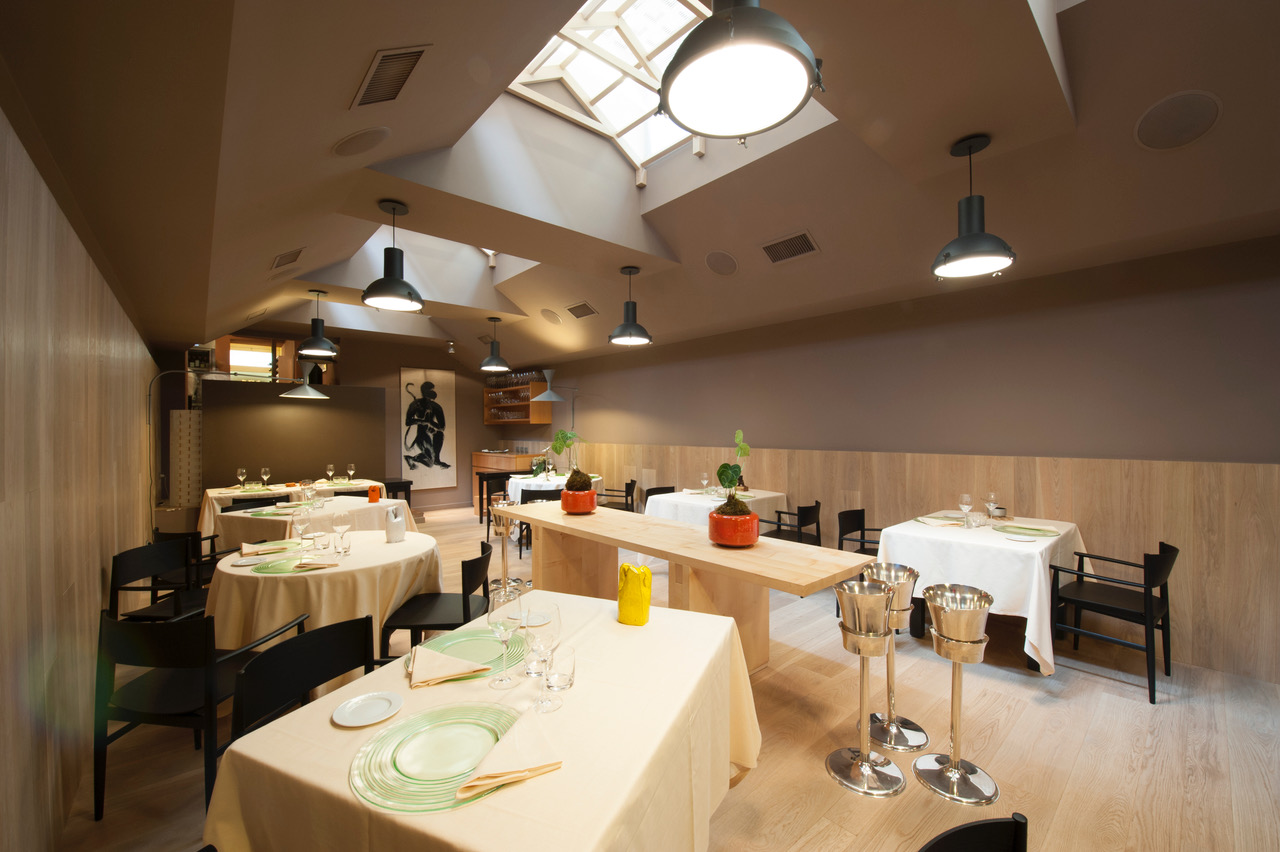How Italy's Pietro Leemann Elevated Vegetarian Cuisine — Thirty Years and Counting

Photo Credit: The dining room at Joia in Milan, which has served elevated vegetarian fare for three decades. Joia Restaurant
Skift Take
Imagine pioneering elevated vegetarian cuisine thirty years ago in a fine dining restaurant in Italy. It took a few years to take off, but chef Pietro Leeman hasn't looked back since — nary a noodle or tomato in sight.
Haute vegetarian cuisine might be a buzzy trend right now, but Swiss-born and Milan-based chef Pietro Leemann has been tirelessly working on it for the past thirty years.
His Milan restaurant Joia, established in 1989, was the first fully vegetarian restaurant in Europe to be awarded a Michelin star in 1996 (which they still maintain to this day). Leemann comes from a nouvelle cuisine background and his main mentor was Gualtiero Marchesi, the de facto founder of modern Italian creative cuisine. Aged 23, he decided to adopt a vegetarian lifestyle, and by opening Joia, he wanted to shake up the panorama of high-end European restaurants.
"At some point, all the European cuisines were all the same,” he told Skift Table alluding to the predominance of nouvelle cuisine. “Whether you were in Milan, Munich or anywhere else, the same dishes were offered. Creativity was limited, and with my cuisine I strived to disrupt the barriers of the genre.”
After the first three years, during which his message was deemed a little kooky and extreme, Joia finally took off, and, to this day, it is both a life and business project. “Having Joia led to important consultancy businesses with the likes of Barilla and Lavazza, Orogel and with hotel businesses too,” Leemann tells us, adding that his educational project Joia Academy, a vegetarian-forward culinary school is current priority. Here's how he established the tradition of haute-vegetarian cuisine.
Communicate an idea behind each dish, don’t just describe it.
His dishes come with specific and evocative names, rather than being mere descriptive strings of words: “My Dearest Planet” (oh mio caro pianeta), is a vegetarian version of foie gras with apple chutney, topped by a crunchy dome; Macondo consists of a fig-and-chocolate terrine with Sicilian-mango cream, banana and mint ice cream and soft almond foam, while “The Navel of The World” (ombelico del mondo), an Asian-style risotto with ginger, shiitake mushrooms, Italian-pepper paprika, roasted black rice and artichokes with a miso-based condiment.
“Each dish is born out of an idea and carries a message: the guest is fed an idea,” said Leemann. He started experimenting with this approach 22 years ago: before, his menu was just descriptive. One of his first forays into this art was omaggio al surrealismo (homage to surrealism). In case the name was not explicit enough, the dish was a tribute to the art of Salvador Dalì: it contained an upturned plant, an eye-like item, actually a quail egg that seemed to stare directly at the person who ordered that dish and a cylindrical structure with a swaying feather, made with edible gold, and a fork.
Evolve and transform, but stay faithful to your principles.
Motivation, high-quality ingredients that are locally sourced and, first and foremost, simplicity are Leemann’s three founding principles. He always incorporates them as his menu changes over time. “For this season [spring 2018] I wanted something light, something fresh and something immediate, something direct involving few cooking processes, with flavors that are very precise and delicate and a lot of color,” he said. "It’s representative of this moment, in which each individual tries to express kinship with nature, in opposition to the dire current political climate.”
Focus on healthy cuisine, without proselytizing.
Each dish on Joia’s menu is supervised by a nutritionist. "Even though I do not state it out loud,” he said, “It’s mandatory for me to have a nutritionally-balanced menu.” He wants to emphasize how “healthy” plates can indeed be gourmet. “People tend to associate “good” food with transgression: too much fat, too much of this, and of that. A tasty cuisine can also be healthy.” While he applauds current food trends embracing a so-called "healthcore" trend, his eye is set on science. “I think science finally determined what constitutes a healthy diet,” he tells Skift Table. ”Until recently, there were many contradictions: some were in favor of meat, other banished it, and the same with carbs. Now, with its major emphasis on gut health above diet fads, science is finally offering universal guidelines”
Uncover improvements and smart tweaks to the food traditions you grew up with.
Joia is technically a lacto-vegetarian restaurant. Twenty percent of the dishes contain dairy, and, currently 80 percent of the menu is gluten-free. “I think Italy consumes too much wheat, so my intent is to show how, even without gluten, one can serve appetizing dishes.” He does not imitate ingredients: no veggie burgers, no ersatz pasta. Instead, he makes, for example, roasted doubloons (named after the eponymous coin) with buckwheat, and claims that potato starch is a great flour substitute when it comes to desserts. What else could Italians use less of? To Leemann, it’s tomatoes. “[In Italy], tomato is the culinary equivalent of an earworm,” he says. “Too much tomato flattens flavors: Italian cuisine has it everywhere. Italian traditions across the peninsula have a plethora of alternatives: saffron, mushrooms, cabbages, shallots, you name it.”
JOIA is located in Via Panfilo Castaldi, 18, 20124 Milano MI, Italy
Skift Table contributor Angelica Frey is a writer living in Brooklyn by way of Milan. Twitter: @angelica_frey

The travel industry's top event returns this fall.
September 16-18, 2025 - NEW YORK CITY
